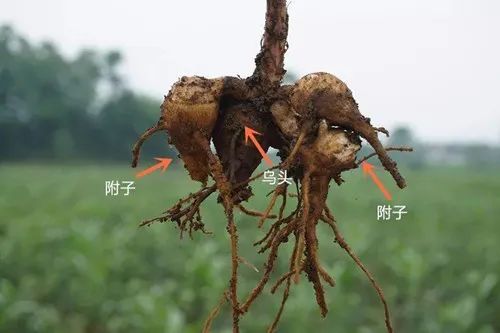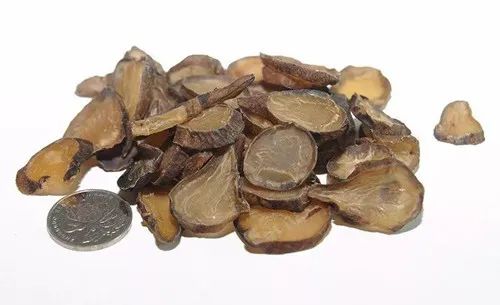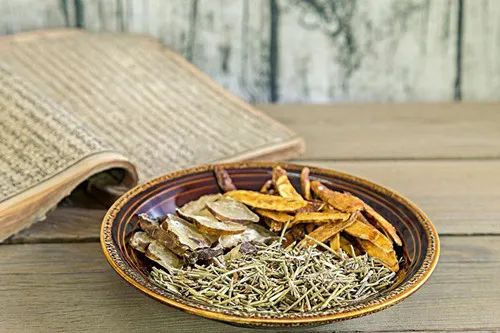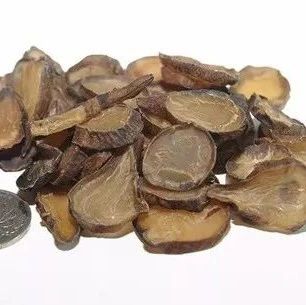
Aconite (Fu Zi) is a commonly used toxic Chinese medicinal herb, “cultivated in winter and harvested in summer,” embodying the yang energy of heaven and earth, and possesses a strong and unique ability to dispel cold and support yang. Ming Dynasty physician Zhang Jingyue referred to Aconite along with Ginseng (Ren Shen), Rehmannia (Shu Di), and Rhubarb (Da Huang) as the “Four Pillars of Medicine” and “Good Generals of Medicine“. However, improper use can lead to poisoning, causing some to view Aconite as a “venomous snake or scorpion.” Today, let’s learn more about Aconite.



 The Composition and Processing of Aconite
The Composition and Processing of Aconite
Aconite is first recorded in the “Shennong Bencao Jing” and is derived from the lateral roots (subroots) of the Aconitum plant, primarily produced in Sichuan, Shaanxi, Guizhou, Hubei, and Hunan provinces of China. It has a long history of use by the laboring people of China, with records indicating cultivation in places like Zhangming and Jiangyou in Sichuan for nearly a thousand years.
Aconite is a processed product of Aconitum subroots, with a complex chemical composition, the main component being Aconitine. It has a pungent, sweet, and very hot nature, with strong toxicity that can easily lead to poisoning if used improperly.
Therefore, it is essential to process Aconite to reduce its toxicity. The five processed products, including Black Shun Pian, White Fu Pian, Pao Fu Pian, Salt Aconite, and Dan Fu Pian, are included in the National Pharmacopoeia; while Shou Fu Pian, Huang Fu Pian, Pao Fu Pian, Gua Fu Pian, and Pao Tian Xiong are included in the Sichuan local standards (Sichuan-produced Aconite accounts for 85% of the national output).

 Medicinal Value of Aconite
Medicinal Value of Aconite Pharmacological Effects
Pharmacological Effects
1. Enhances myocardial contractility, accelerates heart rate, increases cardiac output, and raises myocardial oxygen consumption;
2. Dilates blood vessels, increases blood flow, and improves blood circulation;
3. Has both hypertensive and hypotensive effects on blood pressure, related to its components;
4. The effect of rescuing yang is primarily based on its strong heart and anti-shock effects;
5. Exhibits significant anti-bradyarrhythmic effects;
6. Aconite decoction has a notable inhibitory effect on acute inflammation models.
Specific Effects
1. Treats irregular menstruation;
2. Treats cloudy urine;
3. Treats urinary retention;
4. Treats pain in the fingers.
Additionally, Aconite has dietary therapeutic value. It warms the interior, dispels cold, supports yang, promotes fluid metabolism, supplements fire, alleviates pain, and provides local anesthesia. Moreover, Aconite stimulates the pituitary-adrenal cortex system.



 Precautions for Using Aconite
Precautions for Using Aconite
Research has found that both oral and external use of Aconite can lead to adverse reactions.
Adverse reactions from oral Aconite can affect multiple systems and organs, primarily damaging the nervous system, digestive system, and cardiovascular system, as well as including respiratory system damage, urinary system damage, visual impairment, systemic damage, and skin damage; external use can cause skin damage.
The main risk factors for adverse reactions to Aconite include: using raw products, overdosing, improper decoction, using folk prescriptions or medicinal meals, and accidental ingestion.
Aconite has many effects, but it still contains toxic components, so it is crucial to use Aconite with great caution and under the guidance of a physician to ensure safe medication.
2019 An An Network Campus Tour, China Pharmaceutical University, Liu Xingmei’s work
Some images sourced from the internet
Editor / Guangdong Provincial Drug Administration Service Center (PAN)
Reviewer / Zou Yuhua

